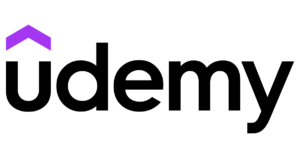I’m a person of habit. I like things to be structured in a certain way so that I don’t have to think about the little things. Repeatable, automated tasks make me very happy because I can then focus on the big stuff – solving problems, building awesome new things, and writing.
So I’ve gotten pretty good over the years at identifying the structure in my day, defining my routines and building habits that allow me to get a lot of things done in a short amount of time (practically required with two young children).
Every now and then, though, something comes along and throws a wrench in the works. Life isn’t static – things change and when they do, routines tend to get scrambled. It’s why I almost always drop my exercise routine when I get sick. Being knocked out on the couch totally derails my workout routine (something I am unfortunately all too happy to let happen).
And recently, following a move from New York City to Pittsburgh and a shift from working in an office 9-5, Monday-Friday to working at home again, I find myself in transition.
It’s an exciting transition – one that allows me to spend more time with my children, write more, and work on projects that have been on the back burner for nearly two years, but it’s also a very different lifestyle, and the old routines that used to get me through the day are pretty much useless. So I had to do some restructuring. I have by no means solved it, but here’s how I’m tackling my particular scheduling shift.
Step 1 – Identify Goals and Current Habits
 The first thing I did was sit down and write up what my new weekly goals would be. This was relatively easy because one of my habits is to write in a journal for 15 minutes every morning – a quick blurb about my expectations for the day and then 6-8 goals for the day, 3 for the week, and notes on my goals for the month.
The first thing I did was sit down and write up what my new weekly goals would be. This was relatively easy because one of my habits is to write in a journal for 15 minutes every morning – a quick blurb about my expectations for the day and then 6-8 goals for the day, 3 for the week, and notes on my goals for the month.
There was no reason at all to change this. The goals themselves may have changed, but the journal did not and remains a part of my day. It also allowed me to identify more easily what my specific goals are now that I’m working at home and not in an office. What do I want to get out of my day? I have a list.
I also jotted down the habits that I had in place. With a 12 hour work day and kids waiting at home, things were fairly tightly managed. From waking up at 5:30 to morning journaling and exercise and the routine with which I would unpack my schedule at work, I had a checklist I would run down just about every day, no matter how many unexpected “surprises” popped up in the office.
I wrote those down and then bolded all of the ones that I wouldn’t be needing. I did not cross them out, though. I just made a note.
Step 2 – Identify Replaceable Habits
The human brain is a remarkable machine. In a lot of ways, we have no idea how it works, but there are a few tricks we’ve picked up over the years studying brain activity. One of those is the trigger mechanism for habits.
Because habits are stored in a different part of the brain – a much older and more automatic part – they tend to be triggered by actions or events. When creating a new habit, the easiest way to do so is to create such a trigger and associate the desired action with that trigger. Roll out of bed and put your shoes on, forcing yourself to go out the door to run before you’re awake enough to decide against it.
When a habit isn’t needed anymore – for example my habit of preparing for every meeting I have with a bulleted agenda at 8am each day – the first reflex is to dump it. It’s almost exciting to remove something no longer needed from the day’s to do list.
But the trigger is still there. When I sit down at my desk in the morning I have the urge to organise my schedule and prepare agendas for meetings that no longer exist. This is a replaceable habit. This is a moment in the day when I can ensure I do the same important task every day, triggered by that first plop into my desk chair.
Instead of those agendas I now write a blog post. The first thing I do when I sit down is write a blog post – either for this site, for a client, or for my podcast. It takes about the same amount of time as those agendas and it’s a great way of easing into the mindset needed to tackle the day’s projects.
With a list of these habits in hand, I have started replacing them with more relevant actions to my current situation.
Step 3 – Be Flexible
 It took the better part of a year to create a schedule and routine for my job in Manhattan. It was frustrating at times and I wasted a lot of time trying become as efficient as possible without overdoing it.
It took the better part of a year to create a schedule and routine for my job in Manhattan. It was frustrating at times and I wasted a lot of time trying become as efficient as possible without overdoing it.
That can’t be replaced overnight. And honestly, I don’t know what the most important tasks in my day are right now, nor which ones can be fully automated and which require more of my conscious attention.
The key is flexibility and the willingness to make changes and adjust to circumstances as they arise. This is especially important for me right now, because I don’t work the same hours every day, nor do I work on the same projects every day.
But by creating checkpoints in the day – routine-based activities that will be the same every day I sit down to work (setting goals, writing a blog post, etc.) I’m finding the transition much smoother than I expected.
Making Changes to Your Routines
Not everything can be engineered. Sometimes you have to be willing to go with the flow and make changes as needed. But for those things you can control and the habits you can create and maintain, a lot of unnecessary stress can be removed from your day.
The next time you prepare for a major life change and know your routine will be thrown into chaos, keep this in mind. It won’t translate overnight, but mindfulness of your needs and goals will make the transition smoother.






